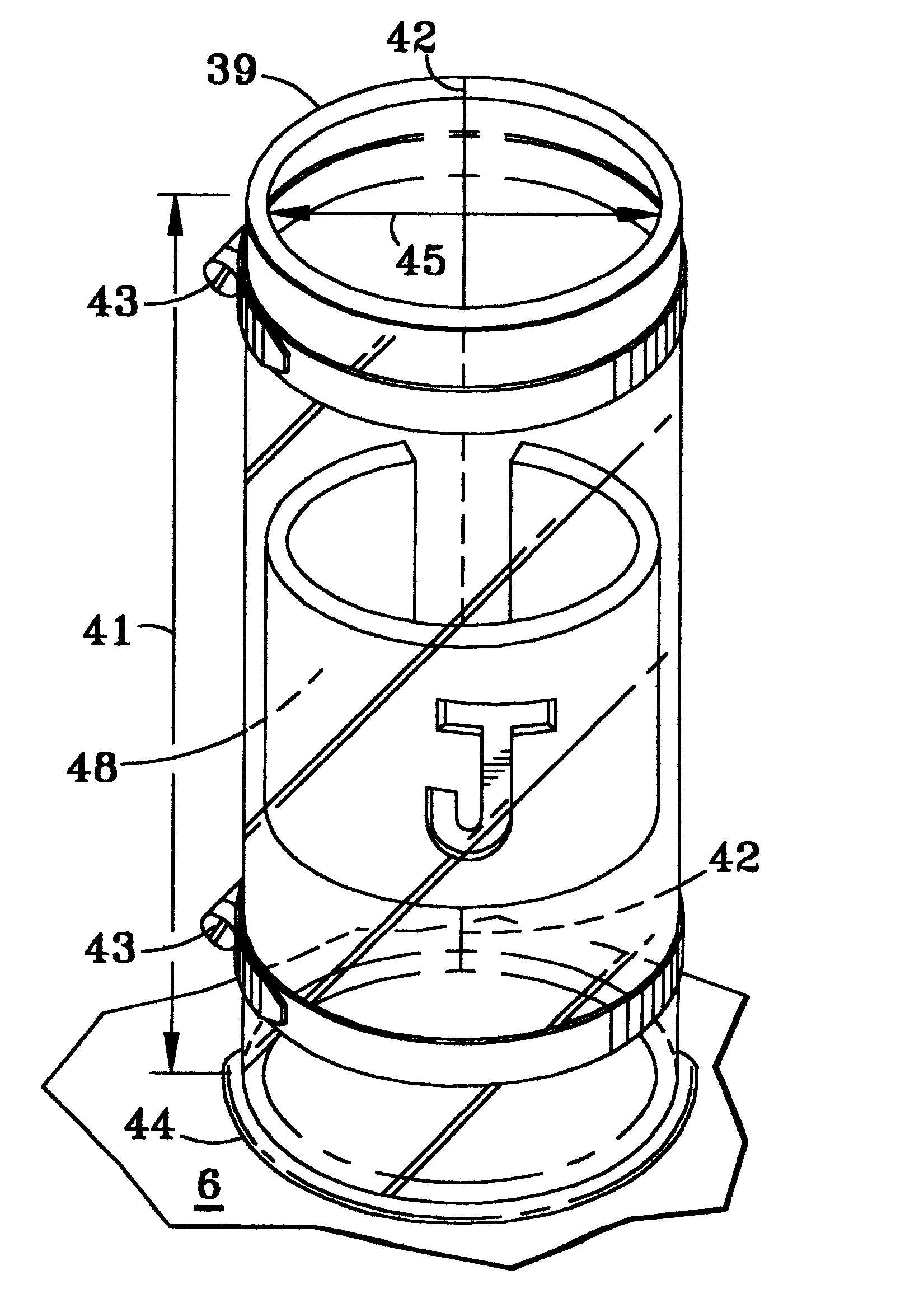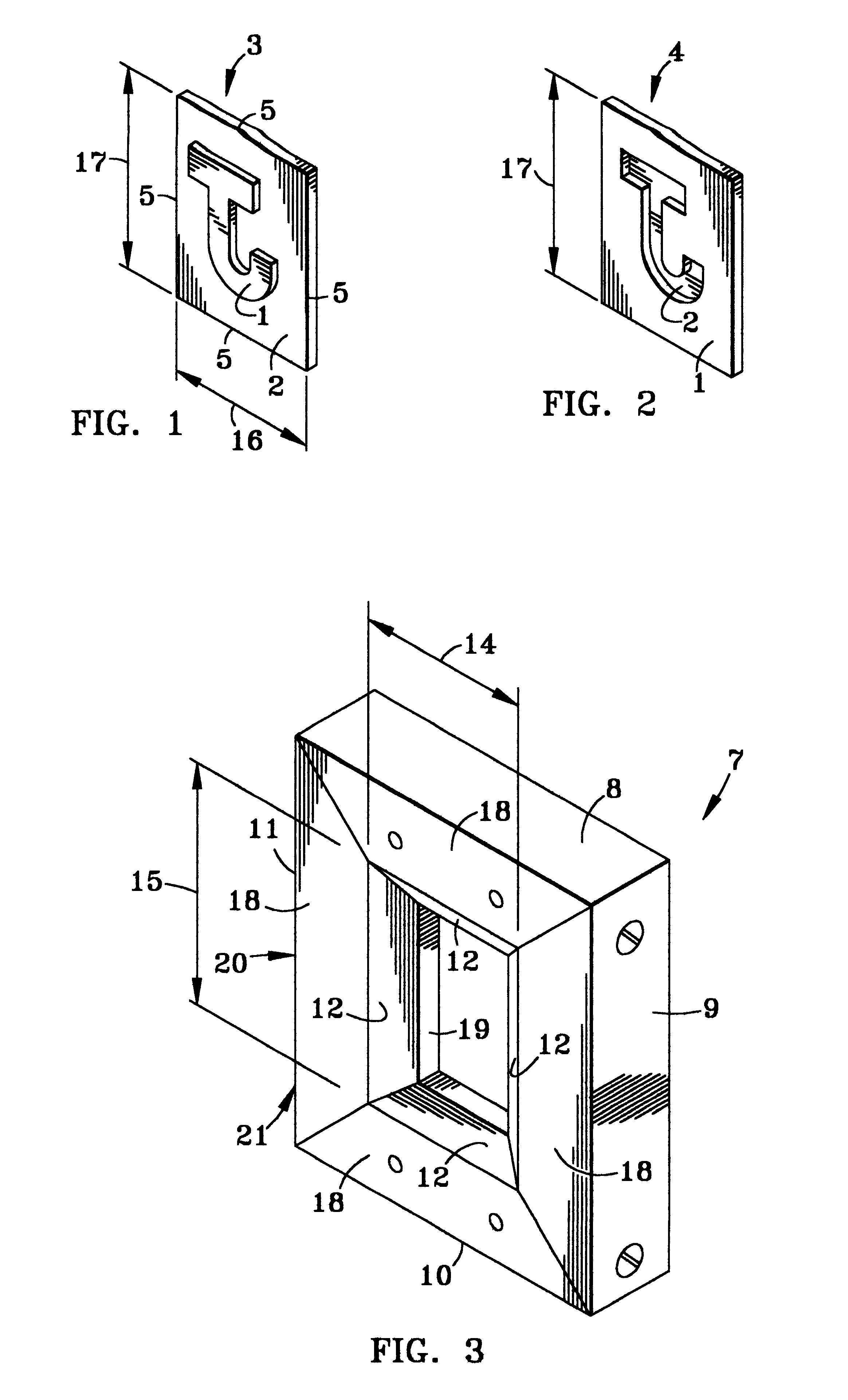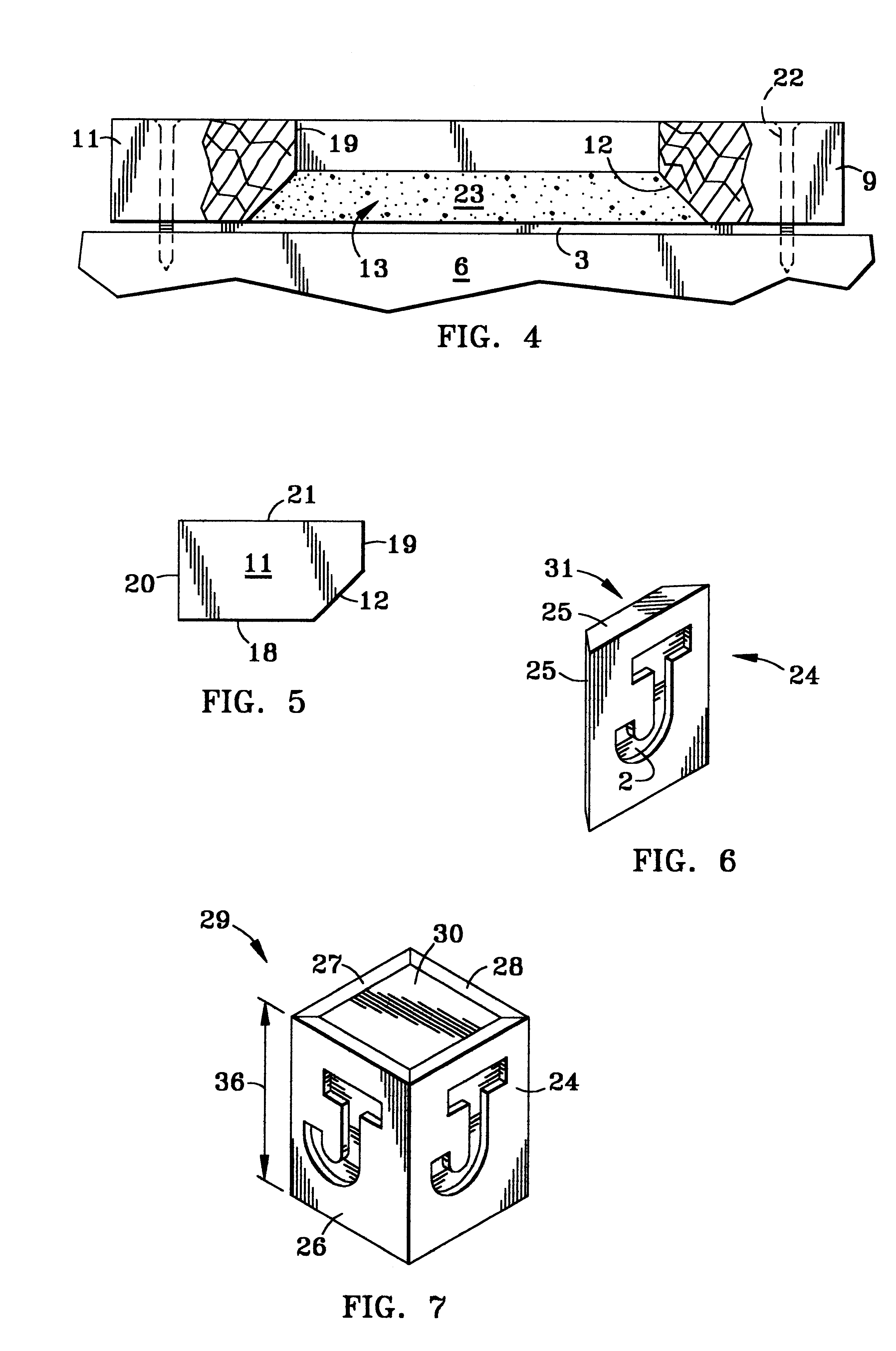Method for producing candles having three dimensional surface designs
a three-dimensional surface design and candle technology, applied in the field of three-dimensional surface design producing candles, can solve the problems of difficult production of surface designs such as lettering and graphic designs, limited number of methods known for making candle molds, and limited number of methods
- Summary
- Abstract
- Description
- Claims
- Application Information
AI Technical Summary
Benefits of technology
Problems solved by technology
Method used
Image
Examples
second embodiment
In the invention, the method disclosed by the inventor may be utilized in the production of candles having curved exterior surfaces, for example, candles having a cylindrical form. As with the polygonal candle, the method starts by producing a rubber stamp having thereupon the desired design.
At this point, as per FIG. 9, the second embodiment differs somewhat from the preferred one as disclosed above. First, if the design which is to appear on the completed candle is to be incised into the candle (that is, appear as background as per FIG. 2), the design elements on the rubber stamp must appear as foreground. Furthermore, the design on the rubber stamp should not be present as a mirror image, that is, in keeping with the earlier example, the letter "J" would not appear as a mirror image, but would rather be oriented just as it would ordinarily appear in print.
Next, rather than building a dam around the rubber stamp and using the stamp to produce a hardened casting, instead the rubber...
third embodiment
In the method, completed candles having surface ornamentation may be produced where the candle to be so produced is neither a polygon nor a cylinder. Examples of these "other" shapes would be spheres and variations on cylinders having differing diameters along the cylinder's short axis (for example, an hour glass shape), including tangible objects such as coffee mugs (a cylinder with a "C" shaped handle attached thereto).
In the case of the "other" object, the method begins with an object which is to be reproduced as a wax candle. For purposes of understanding, inventor will describe the method for producing a candle which is a duplicate of a baseball, wherein the candle so produced also has a desired design such as the letter "J" on its exterior surface.
As per FIG. 11, the object to be reproduced (60) is rendered stationary by the construction of a stand (stem) (61) which will both support the object and ultimately serve as a means for introducing wax into a third rubber mold. The i...
fourth embodiment
The fourth embodiment then incorporates a portion of the method disclosed in the third embodiment. A rubber stamp is created having the desired design upon it, the design appearing as background (assuming the candle is to have the desired design appear on its surface as background). As with the plaster model of the third embodiment, the second plaster model is carved such that a flat area is produced upon its exterior surface. The flat area is created and proportioned in the same manner as was the flat area disclosed in the third embodiment. Furthermore, the rubber stamp is then attached to the second plaster model in the same manner as disclosed in preparing the plaster model of the third embodiment.
Next, the second plaster model having inset into its exterior surface the rubber stamp is placed within the first hollow cylinder and the auxiliary dam is reconstructed in the same manner as described earlier. The first hollow cylinder is attached to the substantially horizontal, flat, ...
PUM
| Property | Measurement | Unit |
|---|---|---|
| angle | aaaaa | aaaaa |
| angle | aaaaa | aaaaa |
| angle | aaaaa | aaaaa |
Abstract
Description
Claims
Application Information
 Login to View More
Login to View More - R&D
- Intellectual Property
- Life Sciences
- Materials
- Tech Scout
- Unparalleled Data Quality
- Higher Quality Content
- 60% Fewer Hallucinations
Browse by: Latest US Patents, China's latest patents, Technical Efficacy Thesaurus, Application Domain, Technology Topic, Popular Technical Reports.
© 2025 PatSnap. All rights reserved.Legal|Privacy policy|Modern Slavery Act Transparency Statement|Sitemap|About US| Contact US: help@patsnap.com



